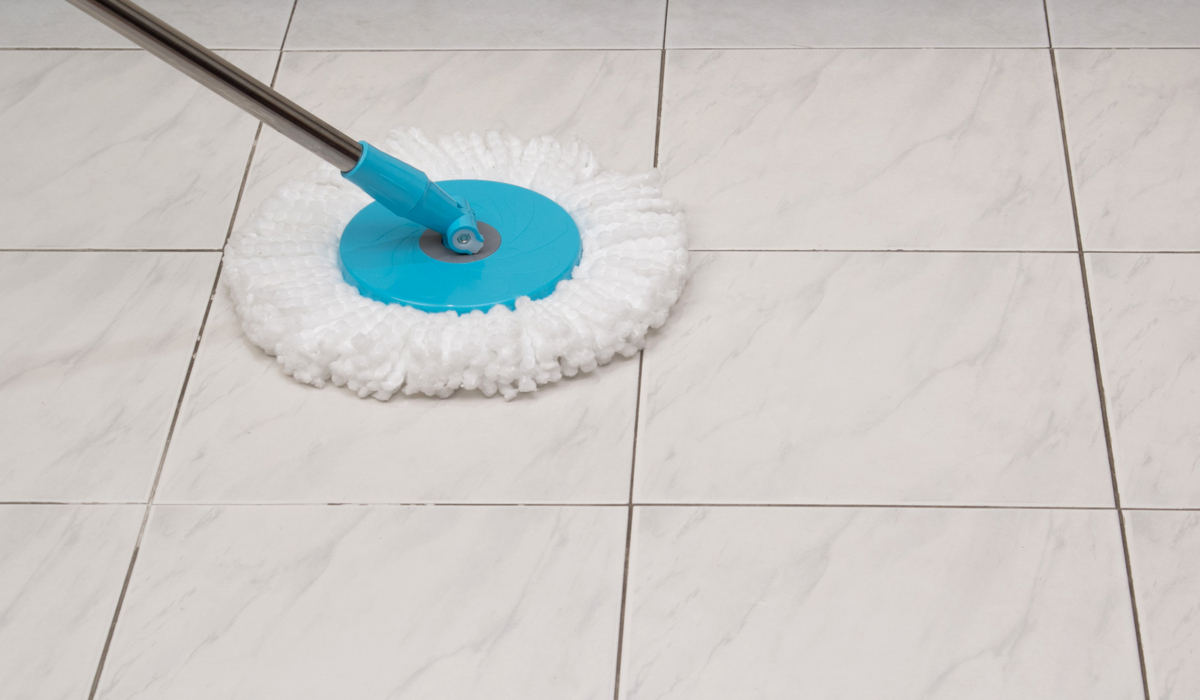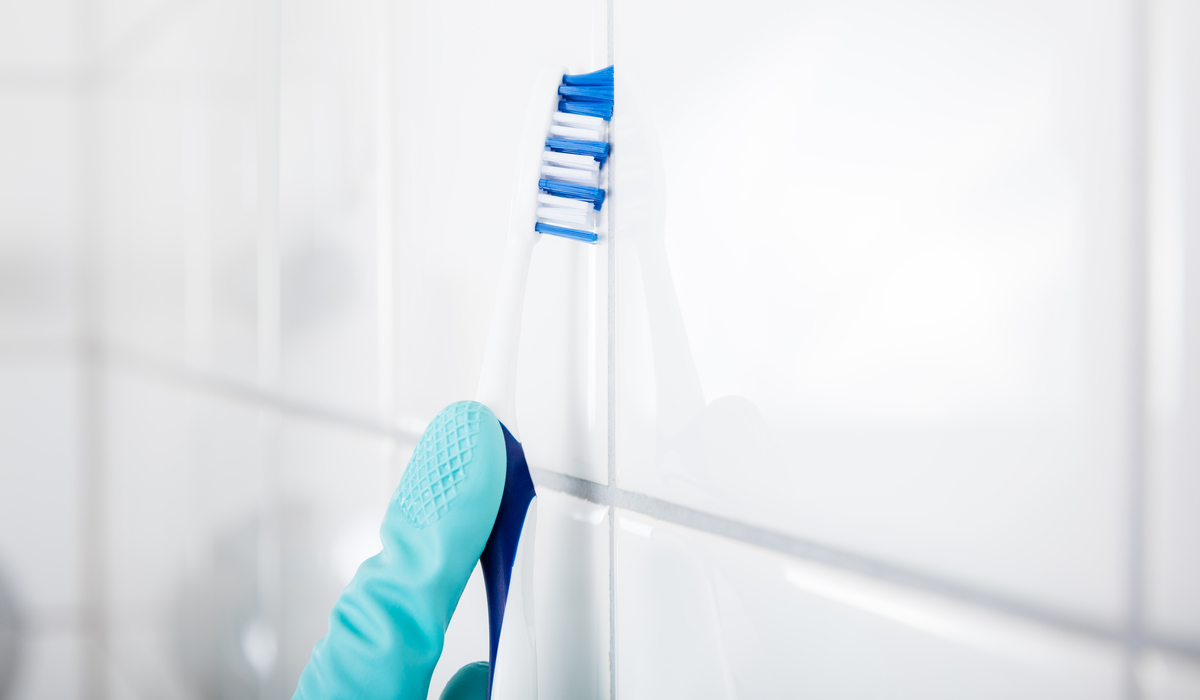Tile floors can last a lifetime if you treat them right, but cleaning your floors can be a real drag. You sometimes have to physically get down on your knees and scrub away like an inmate with a toothbrush! But proper floor maintenance can make things a lot easier for you in the long run.
Whether you are looking to keep your new floors clean or make your old floors shine like new, you will want to make sure you have the proper supplies and the proper approach.
So read on to learn how to clean your tile floors!
Tile Waves
It’s no secret that your bathroom is a breeding ground for germs and bacteria and needs frequent cleaning. This can seem like a chore, but there are many good reasons beyond cleanliness to break out your mop and duster and get to work. Cleaning will improve your mood and well-being and have the added benefit of reducing the spread of germs.
That doesn’t mean scrubbing the floor every time you enter the room, but regular cleaning will make a world of difference. When it comes to a tile floor, doing a “dry clean” with a broom or vacuum every few days will help remove debris that can detract from your floor’s finish.
If you really want that nice floor looking polished and shined, you are going to need to get a little more involved. You will need to commit to a wet clean with a quality mop every two weeks or so.
If it’s your bathroom, you might want to clean it every week since the germs in there can build up fast! Spot-cleaning your grout is a major part of maintaining a polished floor. You will want to mix in a grout scrub at least every two or three months.
Slow Down, You Crazy Tile
When it’s time to clean, you will want to make sure you have the right cleaners in your arsenal. You wouldn’t clean your cupboards with a cleaner meant for stainless steel. The same concept applies to scrubbing your tile floor.
Yes, your tile floor is incredibly durable and can withstand some abuse, but certain types of tile need to be cared for in a specific way.
Ceramic and porcelain floor tiles are pretty easy to manage, while tiles that are coarser, such as marble, granite, slate, or limestone, will require individualized care. In some cases, these floors need to be treated with specific cleaners.
No matter what the material of the tile is, you will want to start with a semi-clean floor, so whip out your vacuum or soft bristle broom. If you use a vacuum, make sure to put on the brush attachment to remove dust and the remaining dirt particles.
You want to start with as clean a slate as possible before you start to mop, or you will risk pushing dirt deeper into the tile, making it harder to remove the longer it sits there.
Let’s go floor-by-floor to cover the best way to clean each.

Ceramic Tiles Are Always In Style
Ceramic tiles are a classic and common tile flooring. Ditto for porcelain. Both are durable and easy to maintain, but it can be difficult to see the buildup of grime on their surface.
You can clean both of these types of tile with almost any type of cleaner, whether it’s all-purpose, dish soap, or simply white vinegar. To clean, you will need the right floor mop. You will want a rag or chamois mop rather than a sponge mop.
The reason to reconsider using a sponge mop is that they tend to push dirty water into the grout lines, making them harder to clean. Make sure to frequently change the mop water to avoid having a cloudy floor.
Keep your eyes peeled for tile stains after your first cleansing. If you see any, try to determine what substance made the stain and then use the appropriate cleaner to attack it effectively.
Look out for residue soap. If you leave soap on the tile, it might wind up looking hazy even after all your hard work. Remove it with a non-abrasive cleaner or a homemade one with fresh lemon juice.
You are going to want to dry your tiles as soon as you can to further guarantee they don’t come out looking hazy. Dry with a clean, lint-free cloth immediately after washing. Try to save your knees and dry with a cloth attached to a pole or use your foot to slide the cloth over the floor.
When cleaning and drying, go one section of the floor at a time.
Stone Tile Temple Pilots
Natural stone tile like slate, granite, or marble requires a slightly different approach since chemicals in traditional cleaners can damage the surface of these kinds of tiles. You will need to make sure you are using a cleaner that is made specifically for natural stone.
Obviously, you will want to follow the same pre-mop instructions and sweep or vacuum. But for a stone tile floor, you will want to use a soft-bristled broom when sweeping as these floors will scratch much more easily than others.
A Clean Slate
Slate tile is a beautiful tile option for your home. When it’s time to clean, you can also use a mild detergent. Make sure the cleaner you chose does not contain any acidic properties, such as lemon or vinegar. A mixture of warm water and dish soap is always a safe bet.
Water spots usually show up faster on a slate tile floor, so be sure to dry the tile right away with a soft towel.
For All The Marbles
Marble floor, you fancy pants! Marble is ideal for areas with a lot of foot traffic because it can withstand constant use. It’s a stunning tile that is also a bit high-maintenance.
Avoid cleaning marble tile with any cleaner that has an acidic pH level as it might streak or discolor your floor. Cleaners with lemon or vinegar need to be avoided since they can etch the surface of the tile. Marble is also prone to scratching, so avoid brushes or tough bristles and scouring powders.
Usually, the best option for marble tile is hot water and a spray cleaner designed for marble floors. Apply using a soft cloth or sponge and buff dry with a clean cloth. If you clean frequently, it should prevent the need for using soap.
Taken for Granite
Granite is very similar to slate and marble. Granite tile needs to be cleaned with a mild detergent that is pH-neutral. If you use a harsh cleaner, you risk leaving streaks of discoloration. Discoloration is especially noticeable on white granite so stay vigilant. If you really want your granite to shine, you may want to buff and polish it as well.
For all stone floors, use a rag or chamois mop instead of a sponge. Again, you don’t want to push the dirt further into the grout. Also, vinegar or peroxide will loosen your grout, so avoid it at all costs.
Vinyl Collection
Vinyl and linoleum floors are less expensive alternatives to pricer stone or ceramic, but keeping them looking clean is just as important! Also known as resilient tile, this is a great opinion if you want a surface that is easy on the feet and needs minimal maintenance compared to other tiles.
- For vinyl, simply sweep or vacuum any debris as you would any other floor and then start to mop with a vinyl cleaning solution or water and vinegar. Make sure not to use an abrasive cleaner or scrubbing tool on vinyl as it may scratch the surface of the tile.
- Linoleum tile is often mistaken for vinyl flooring, but it is a very different material that has its own unique cleaning requirements. After you sweep or vacuum, wash the tile with a linoleum flooring cleaning solution. Rinse the floor and let it dry.
Apply a coat of wax or liquid wax and buff to a shine every three to six months so that the tile doesn’t fade.
An important thing to keep in mind is that you should never use a steam mop on either of these types of tiles. They are not designed to stand up to extreme heat or excess moisture.

Oscar the Grout
The real secret to a beautiful tile floor is having clean grout. Grout, especially if it’s light in color, is prone to stains. Grout is just one of those materials that are hard to keep clean no matter what because it is porous and absorbs grease and other stains.
To clean your grout, try combining baking soda and water to make a paste and avoid buying a pricey grout cleaner. Rub the grout on the stain and let it sit a few hours, or ideally, overnight. Scrub the stain with a nylon brush or toothbrush. Repeat the process as needed.
After, apply a silicone-based sealer to the grout in order to repel future stains. It’s best to apply grout sealer around two weeks after the grout is installed or renewed.
Some people will swear by using a steam cleaner on grout, but there is a possibility it will damage the grout in the long run, especially if the floor is older.
If you follow these steps, your floor should be looking as new as the day you had it installed! For more tips, tricks, and amazing essentials, check out Bulbhead.
